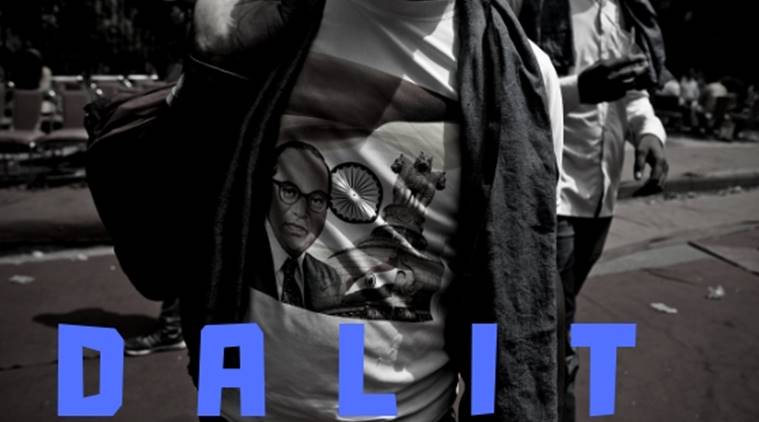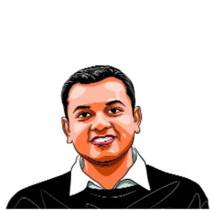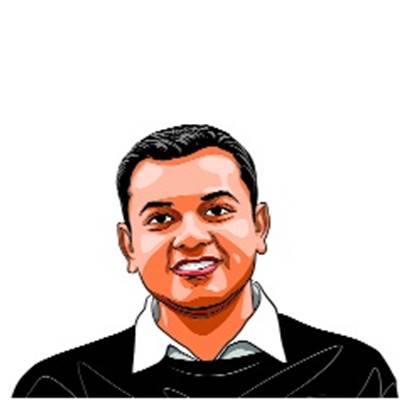Why we need Dalit
The term seeks to change structures of oppression, rather than adjust to them

“Dalit” is an open category. It is a call to all those who believe in the project of annihilation of caste to align with the Dalit struggle without alluding to any ordained isms.
A recent government advisory asked the media to avoid using the term “Dalit” in compliance with the orders of the Bombay and Madhya Pradesh High Courts. The courts directed the Centre and state governments to refrain from using the nomenclature as it “does not find any mention in the Constitution of India or any statute”. This advisory has led to a sudden distraction from the actual work that is required to bring about an improvement in the lives of Dalits.
I have been involved in refining the categories of the caste dictionary and have argued repeatedly that the epithet of “lower” caste, below the “upper” caste, offers limited avenues of expression and rebellion, which are essential for systemic change. Anti-human and anti-equality discourses are outlandishly termed as “upper” without any qualifiers. Communities should have the agency to decide what they wish to call themselves. Thwarting their agency is the principal factor that goes into maintaining caste supremacy. The so-called “lower” beings are widely thought of by the occupants of agraharas as mindless, thoughtless and inactive components of Brahminical civilisation.
I have been involved in refining the categories of the caste dictionary and have argued repeatedly that the epithet of “lower” caste, below the “upper” caste, offers limited avenues of expression and rebellion, which are essential for systemic change. Anti-human and anti-equality discourses are outlandishly termed as “upper” without any qualifiers. Communities should have the agency to decide what they wish to call themselves. Thwarting their agency is the principal factor that goes into maintaining caste supremacy. The so-called “lower” beings are widely thought of by the occupants of agraharas as mindless, thoughtless and inactive components of Brahminical civilisation.
“Dalit” means many things. It offers a historical grip and a route to the current realities. It keeps an account of the past, which is largely unwritten and unacknowledged. It is a phenomenological opportunity for a self-reliant existence, without being solely the subject of the oppressors’ interpretations. This is exactly what occurs to many educated Dalits, who prioritise the Brahminical interpretation of them without owning their own experiences as apriori.
“Dalit” is primarily an anti-caste, anti-Brahminical, anti-capitalistic, anti-oppression, anti-superstition rebellion moulded into the totemic traditions of Dalit emancipation drawn from the experiences of their ancestors’ quest to life. Dalit is a militant affirmation and not a malleable subservient jauhar that many oppressor castes would want to appropriate.
“Dalit” is primarily an anti-caste, anti-Brahminical, anti-capitalistic, anti-oppression, anti-superstition rebellion moulded into the totemic traditions of Dalit emancipation drawn from the experiences of their ancestors’ quest to life. Dalit is a militant affirmation and not a malleable subservient jauhar that many oppressor castes would want to appropriate.
The evolution of the word Dalit or Pad-Dalit was strongly emphasised by B R Ambedkar in his Marathi writings during his years of active journalism and public speaking from 1920 onwards. He fashioned the term for the Depressed Classes to unionise the political categories that are subsumed under it. The translation of Dalit — broken people — was studied anthropologically by Ambedkar in The Untouchables: Who Were They and Why They Became Untouchables? Ambedkar argued that the broken men were a defeated tribe of the constant tribal warfare in primitive society.
Despite these antecedents, there continues to be a controversy within the Dalit community over the usage of the term. Some Dalits prefer staying with the constitutionally-decided terminology (Scheduled Caste), some prefer a neo-Buddhist identity, and some are happy to identify with their sub-caste or sub sub-caste identification.
The middle-class Dalits, who now unexpectedly populate spaces of power, have to deal with the stigmatised identities heaped upon them over millennia — of being inferior beings. They feel it inappropriate to be “lower” when they have reached great heights in their careers. Many refrained from using the word Dalit long before the high courts thought of its unacceptability. Dalits, who are constantly seeking to escape their identity but cannot due to their known caste status, want to find ways to move away from this “lowerness”. Thus, they concentrate on identities such as Ambedkarite, Ravidassi or Valmiki to identify with an exceptional individual in the face of Brahminical oppression. On the other hand, there are many Dalit groups who prefer going with their sub/sub-sub caste categorisation as a way to emphasise their sense of history and being.
The Dalit literary world has expressed “Dalit” in conjunction with the metaphors that usher in a new life. The idea of “humanism, freedom, rebellion, and equality” is strongly reinforced in the popularisation of the term. Literary stalwart Gangadhar Pantawane defended the use of “Dalit” as a phenomenon of “radical consciousness” which goes beyond caste and affirms a “symbol of revolution”. The Dalit Panthers envisaged a collective struggle by tying together the “members of Scheduled Castes and tribes, Neo-Buddhists, the working people, the landless and poor peasants, women and all those who are being exploited politically, economically and in the name of religion”.
What “Dalit” offers is a tool to express oneself without reliance on the oppressor’s vocabulary. The way a word plays out and its inter-relationality to political praxis is determined in the ways in which it diffracts. “Dalit” is an open category. It is not confined to the experiences of a particular caste or sub-caste group. It is a call to all those who believe in the project of annihilation of caste to align with the Dalit struggle without alluding to any ordained isms. It is liberating and encourages rebellion.
We should add positive affirmations to the Dalit being. We should propagate categories such as Dalit beauty, Dalit courage, Dalit rebellion, Dalit resilience, Dalit love, Dalit fight, Dalit creativity, Dalit power. The word Dalit should be so synonymous with multi-metaphors of acceptability that many non-Dalit volunteers buy into the struggle of Dalits.
While on the subject, why don’t we also reconsider the use of words like Brahmin and introduce a more workable category beyond the “forward caste” utterance? Instead of delegitimising the nature of Dalit consciousness, the government and civil society at large should discourage the constant impounding of derogatory words like “upper and lower castes”. The “upper” caste is a blanketed category that cleverly undermines the experiences of poor and oppressed “upper” caste people. The experiences of Brahmins are significantly different from Baniya or Khatris or other thread-bearing castes.
While on the subject, why don’t we also reconsider the use of words like Brahmin and introduce a more workable category beyond the “forward caste” utterance? Instead of delegitimising the nature of Dalit consciousness, the government and civil society at large should discourage the constant impounding of derogatory words like “upper and lower castes”. The “upper” caste is a blanketed category that cleverly undermines the experiences of poor and oppressed “upper” caste people. The experiences of Brahmins are significantly different from Baniya or Khatris or other thread-bearing castes.
“Dalit”, on the other hand, unifies rather than homogenises the experiences of all those forced into one category. Let’s make it simple for everyone and stay with what Ambedkar envisaged, while rampantly deploying the terminology to burn down the desires of oppressors.
The government should indeed proceed with a workable nomenclature such as Scheduled Caste. However, in operation, its babus most often continue to relegate their Scheduled Caste citizens with sub-caste categorisation. Scheduled Caste is a bureaucratic normalisation. It has no capacity to change the structures of oppression. Instead, it seeks to adjust the lived reality and everyday experiences into the lopsided statistics of policies. “Dalit”, on the other hand, evokes, emotions of change and positivity. Emotions that I would love to experience for the time being.
The writer is an inaugural postdoctoral fellow at the Shorenstein Center on Media, Politics and Public Policy, Harvard Kennedy School and is co-editor of the forthcoming The Radical in Ambedkar: Critical Reflections
For all the latest Opinion News, download Indian Express App
More From Suraj Yengde
- Perils of GandhiplomacyWhy there are protests against Gandhi’s statue in Ghana University..
- Casteist India is becoming for Dalits what Western Europe was for JewsRohith’s death has highlighted social injustices of Dalit students. It is an epochal moment where #DalitLivesMatter becomes a priority and #CasteMustFall reiterates our commitment to…







































No hay comentarios:
Publicar un comentario